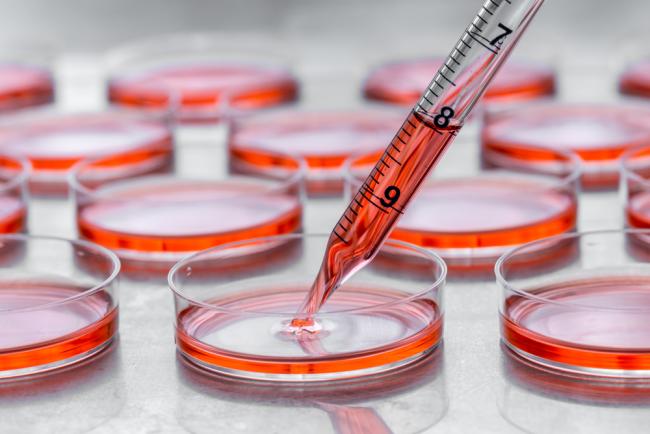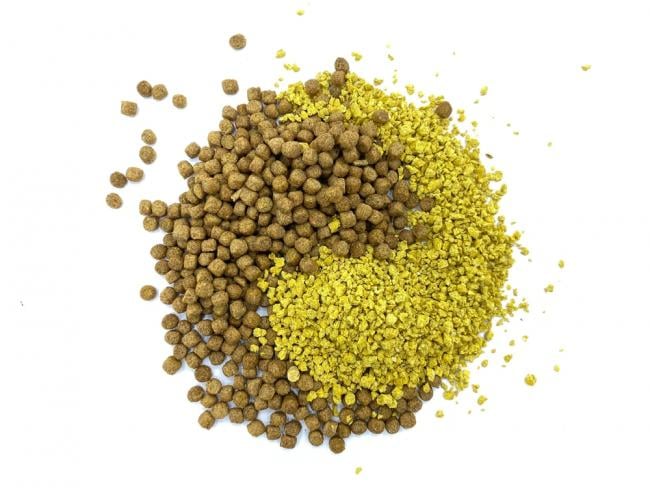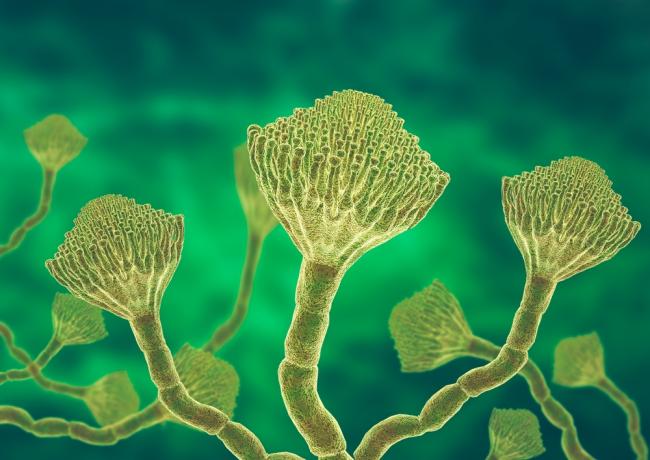Deoxynivalenol (DON), also known as Vomitoxin, is a type of mycotoxin produced by certain species of Fusarium fungi, primarily Fusarium graminearum and Fusarium culmorum. These fungi commonly infect cereal grains such as wheat, barley, oats, and corn, posing significant challenges to agriculture and food safety worldwide1.
Deoxynivalenol is part of a group of mycotoxins known as Trichothecenes, which are characterized by their potent inhibitory effects on protein synthesis in eukaryotic cells. Mycotoxins are toxic secondary metabolites produced by molds that can contaminate crops pre-harvest, during harvest, and in storage. Among the various mycotoxins, Deoxynivalenol is particularly prevalent and is a major concern due to its widespread occurrence and significant health impacts1. Deoxynivalenol is a source of several derivatives. The main derivates of DON are acetylated forms produced by the fungi (3- and 15-acetyl-DON), the biologically "modified" forms produced by the plant (deoxynivalenol-3-β-D-glucopyranoside), or after bacteria transformation (de-epoxy DON, 3-epi-DON and 3-keto-DON) as well as the chemically "modified" forms (norDON A-C and DON-sulfonates)2.
At the molecular level, DON binds to the ribosome, induces a ribotoxic stress leading to the activation of MAP kinases, cellular cell-cycle arrest and apoptosis. The toxic effects of DON include emesis and anorexia, alteration of intestinal and immune functions, reduced absorption of the nutrients as well as increased susceptibility to infection and chronic diseases. In contrast to DON, very little information exists concerning the acetylated and modified forms2.
Crops and food products can be easily contaminated by deoxynivalenol. The Fusarium fungi thrive in humid and wet conditions, which can lead to significant agricultural contamination during wet growing seasons or in areas with high humidity. Processed food products made from contaminated grains, such as flour, bread, pasta, and beer, can also be sources of Deoxynivalenol exposure. Additionally, animal feed made from contaminated grains can transfer Deoxynivalenol into the food chain, affecting livestock and subsequently humans1.
Effective management of Deoxynivalenol contamination requires reliable detection and measurement techniques, which includes: Enzyme-Linked Immunosorbent Assay (ELISA), High-Performance Liquid Chromatography (HPLC), and LC-MS.
Influence of Deoxynivalenol on health:
1. Human Health - Exposure to Deoxynivalenol can lead to a range of adverse health effects, including:
- Acute Toxicity: Ingestion of high levels of Deoxynivalenol can cause nausea, vomiting, abdominal pain, diarrhea, and fever.
- Chronic Exposure: Long-term exposure to lower levels of Deoxynivalenol can lead to immune suppression, growth retardation and intestinal damage. It may also affect nutrient absorption and overall health.
- Potential Carcinogenicity: While Deoxynivalenol is not classified as a carcinogen, chronic exposure to mycotoxins in general has been associated with an increased risk of cancer.
2. Animal Health - Deoxynivalenol contamination in animal feed can result in3:
- Reduced Feed Intake: Animals exposed to Deoxynivalenol often show reduced appetite, leading to decreased feed intake and growth performance.
- Immune Suppression: Similar to humans, animals can experience immune suppression, making them more susceptible to infections.
- Reproductive Issues: In livestock, Deoxynivalenol exposure can lead to reproductive problems, including reduced fertility and increased incidence of stillbirths and abortions.
Decontamination and Detoxification4:
Several methods can be employed to reduce DON levels in contaminated grains:
- Physical Methods: Techniques such as washing, milling, and thermal treatment can help reduce DON levels.
- Chemical Methods: The use of chemical agents to degrade or bind DON, though effective, must be carefully managed to ensure food safety.
- Biological Methods: Enzymatic degradation of DON by specific microorganisms or enzymes is a promising approach for detoxification.
Regulatory Standards and Guidelines:
To protect public health and ensure food safety, various regulatory bodies have established maximum allowable limits for DON in food and feed products:
- United States: The Food and Drug Administration (FDA) has set advisory levels for DON in wheat products and animal feed.
- European Union: The European Commission has established maximum limits for DON in cereals and cereal products intended for human consumption.
- International Standards: The Codex Alimentarius Commission provides international guidelines for mycotoxin levels in food and feed.
Future Directions and Research:
Ongoing research aims to improve our understanding and management of DON contamination:
- Genetic Research: Advances in genetic engineering and breeding techniques hold promise for developing more resistant crop varieties.
- Improved Detection Methods: Continued development of more sensitive, rapid, and cost-effective detection methods will enhance monitoring and management efforts.
- Biocontrol Agents: Research into natural biocontrol agents, such as beneficial microbes that inhibit Fusarium growth, offers potential sustainable solutions.
Deoxynivalenol poses significant challenges to agriculture and food safety, but with effective management strategies, its impact can be mitigated. Understanding the sources of contamination, health effects, and economic implications, and employing comprehensive detection, management, and regulatory measures, can ensure safeguarding the food supply and protecting both human and animal health. Continued research and innovation will play a crucial role in enhancing our ability to manage and reduce the risks associated with DON contamination.
Fermentek offers highly pure Deoxynivalenol as well as the following derivatives: 3-Acetyl Deoxynivalenol, 15-Acetyl Deoxynivalenol as powder and Deoxynivalenol standard solution, all ready for immediate delivery.
- Sumarah MW. The Deoxynivalenol Challenge. J Agric Food Chem. 2022 Aug 10;70(31):9619-9624. doi: 10.1021/acs.jafc.2c03690. Epub 2022 Jul 31. PMID: 35912482.
- Payros D, Alassane-Kpembi I, Pierron A, Loiseau N, Pinton P, Oswald IP. Toxicology of Deoxynivalenol and its acetylated and modified forms. Arch Toxicol. 2016 Dec;90(12):2931-2957. doi: 10.1007/s00204-016-1826-4. Epub 2016 Sep 23. PMID: 27663890.
- Hooft JM, Bureau DP. Deoxynivalenol: Mechanisms of action and its effects on various terrestrial and aquatic species. Food Chem Toxicol. 2021 Nov;157:112616. doi: 10.1016/j.fct.2021.112616. Epub 2021 Oct 15. PMID: 34662691.
- Yao Y, Long M. The biological detoxification of deoxynivalenol: A review. Food Chem Toxicol. 2020 Nov;145:111649. doi: 10.1016/j.fct.2020.111649. Epub 2020 Aug 1. PMID: 32745571





